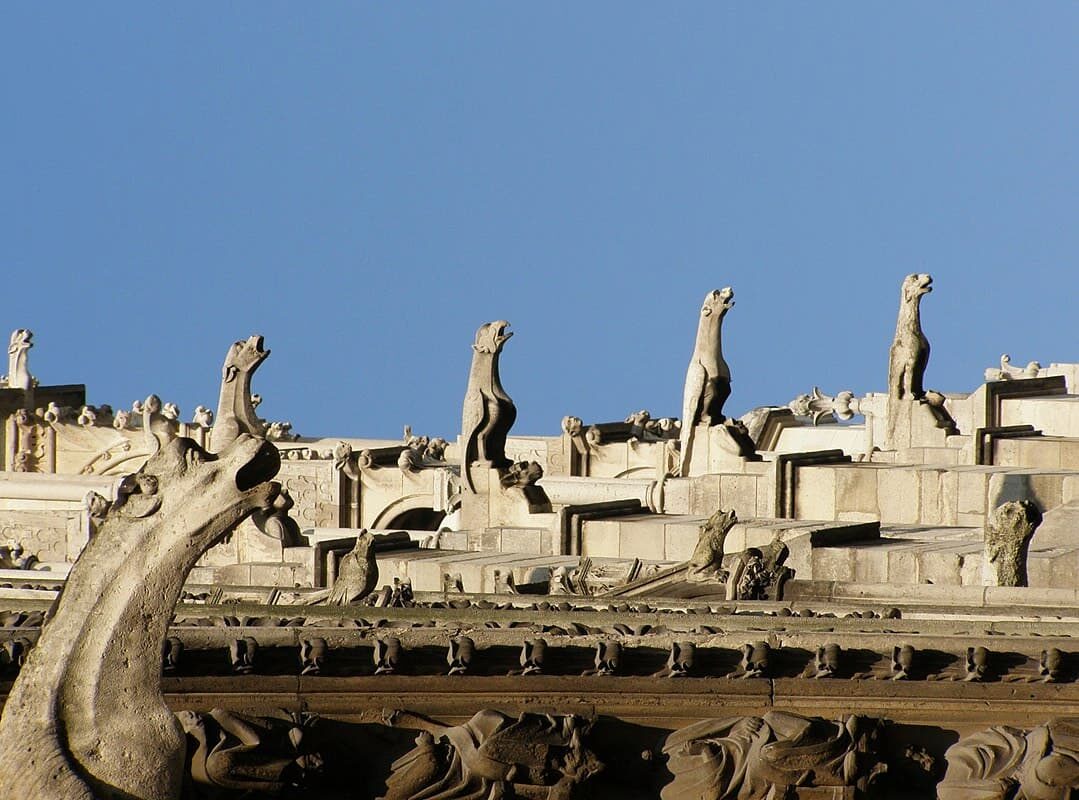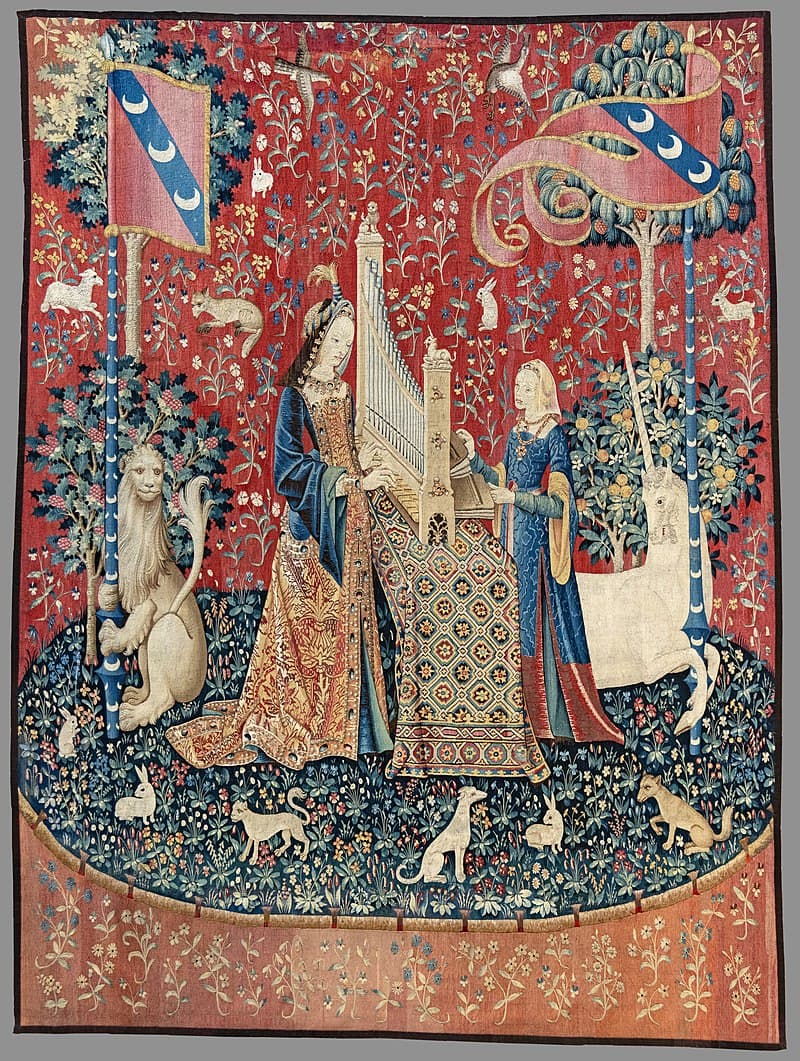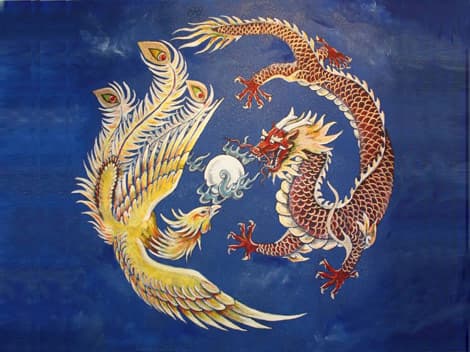Puerto Rican composer Robert Sierra created a Carnaval of animals, and all come from the land of myths: Gargoyles, Sphinxes, Unicorns, Dragons, and The Phoenix.
We start up on the roof, where the gargoyles live – their mysterious and somewhat menacing gestures, always out of sight. And, since they’re above your head, they often give us the feeling that we should be ducking and covering our heads.

Gargoyles on the roof of Notre-Dame de Paris (Photo by Krzysztof Mizera)
Robert Sierra: Carnaval – I. Gargoyles (Nashville Symphony Orchestra; Giancarlo Guerrero, cond.)
Using a passacaglia bass derived from Robert Schumann’s work Carnaval and its ‘sphinx motifs’ that were to be left unplayed, Sierra creates a new world for them.

Schumann: Carnaval – Sphinxes
The three sets of pitches use patterns familiar from other parts of Carnaval: E♭C B A (SCHA) and A♭C B (AsCH) and A E♭C B (ASCH). These appear between pieces 8 and 9 and, according to Clara Schumann, are not intended to be played.
Schumann’s Carnaval, with the subtitle of Scènes mignonnes sur quatre notes (Little Scenes on Four Notes) uses the musical cryptograms given above as the keys: ASCH (for the town of Asch where Schumann’s then-fiancée Ernstine von Fricken was born), and SCHA is the clearly codable part of Schumann’s own name.
Sierra realizes the mystery by having his passacaglia lead up to … Schumann’s Papillons (Butterflies), the piece that follows the appearance of the Sphinxes in the score of Carnaval.
Robert Sierra: Carnaval – II. Sphynxes (Nashville Symphony Orchestra; Giancarlo Guerrero, cond.)
Unicorns takes its imagery from the very powerful set of medieval tapestries, The Lady and the Unicorn, woven in Flanders around 1500. The unicorn in the tapestries is serene and full of a playful beauty and is part of a 6-tapestry meditation on pleasure and the senses.

The Lady and the Unicorn: Hearing, ca. 1500 (Paris Musée national du Moyen ge)
Robert Sierra: Carnaval – III. Unicorns (Nashville Symphony Orchestra; Giancarlo Guerrero, cond.)
The final two movements, Dragons and The Phoenix, are paired, as they often are in mythical literature. The Dragon is the western dragon that breathes fire while The Phoenix dances. In Chinese imagery, both animals are auspicious – sighting them meant a time of peace and prosperity was coming with good things for the people and the country. The Chinese dragon was associated with the Emperor and his power – In the Ming and Qing dynasties, Imperial dragons were shown with 5 claws and in a yellow colour. It is a spiritual and cultural symbol of prosperity. Outside China, dragons are fierce fire-breathers who accumulate wealth, as in J.R.R. Tolkien’s Smaug. Women were more commonly identified with the phoenix.

Dragon and Phoenix
Robert Sierra: Carnaval – IV. Dragons (Nashville Symphony Orchestra; Giancarlo Guerrero, cond.)
Robert Sierra: Carnaval – V. The Phoenix (Nashville Symphony Orchestra; Giancarlo Guerrero, cond.)

Robert Sierra
Sierra’s title of Carnaval immediately connects the work with Schumann’s piano pieces of 1834–35 but expands them to the symphonic context. Although some of the images may be purely Western, the inclusion of the Phoenix brings in the ideas of Asia, making the piece international.
For more of the best in classical music, sign up for our E-Newsletter
